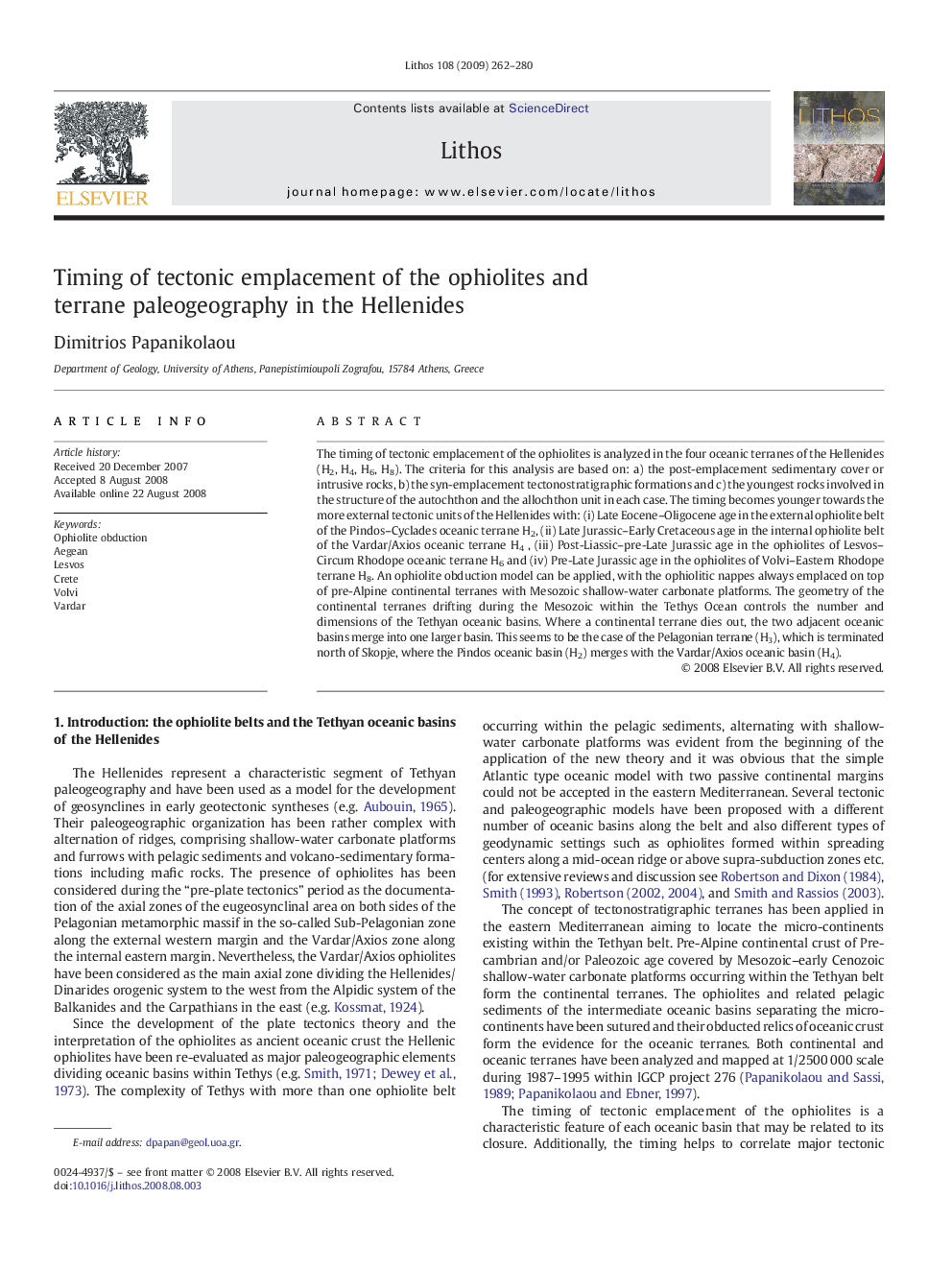| Article ID | Journal | Published Year | Pages | File Type |
|---|---|---|---|---|
| 4717379 | Lithos | 2009 | 19 Pages |
The timing of tectonic emplacement of the ophiolites is analyzed in the four oceanic terranes of the Hellenides (H2, H4, H6, H8). The criteria for this analysis are based on: a) the post-emplacement sedimentary cover or intrusive rocks, b) the syn-emplacement tectonostratigraphic formations and c) the youngest rocks involved in the structure of the autochthon and the allochthon unit in each case. The timing becomes younger towards the more external tectonic units of the Hellenides with: (i) Late Eocene–Oligocene age in the external ophiolite belt of the Pindos–Cyclades oceanic terrane H2, (ii) Late Jurassic–Early Cretaceous age in the internal ophiolite belt of the Vardar/Axios oceanic terrane H4 , (iii) Post-Liassic–pre-Late Jurassic age in the ophiolites of Lesvos–Circum Rhodope oceanic terrane H6 and (iv) Pre-Late Jurassic age in the ophiolites of Volvi–Eastern Rhodope terrane H8. An ophiolite obduction model can be applied, with the ophiolitic nappes always emplaced on top of pre-Alpine continental terranes with Mesozoic shallow-water carbonate platforms. The geometry of the continental terranes drifting during the Mesozoic within the Tethys Ocean controls the number and dimensions of the Tethyan oceanic basins. Where a continental terrane dies out, the two adjacent oceanic basins merge into one larger basin. This seems to be the case of the Pelagonian terrane (H3), which is terminated north of Skopje, where the Pindos oceanic basin (H2) merges with the Vardar/Axios oceanic basin (H4).
